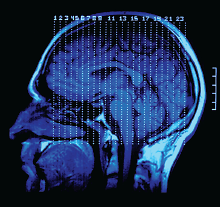Journal Digest
Mental Health Courts May Help to Reduce Repeat Offending

Mental health courts have been implemented in many municipalities to divert offenders with mental health problems to treatment programs instead of jail, with the hope that doing so could prevent repeat offenses.
A new analysis carried out by researchers at North Carolina State University provides evidence that such programs are effective, particularly when those entering the mental health court system have substance use problems.
The research team evaluated 97 individuals with mental health problems who had committed misdemeanors, including 57 people who participated in a mental health court while the other 40 participated in the conventional court system.
The individuals who went to a conventional court spent about 1.6 times more days in jail for repeat offenses than those who went through a mental health court; they also spent almost five times as many days in jail compared with offenders who completed their mental health court program.
The mental health court worked particularly well for offenders who had co-occurring mental health and substance use problems; these individuals had a nearly fivefold decrease in jail time for repeat offenses compared with offenders with no substance use problems.
This study was published in Law and Human Behavior.
Lowder E, Desmarais S, Baucom D. Recidivism Following Mental Health Court Exit: Between and Within-Group Comparisons. Law Hum Behav. Nov 23, 2015. [Epub ahead of print].
Experimental Drug Reduces Autistic-Like Behaviors in Mice

A compound known as SR1078 has been found to reduce autism-like behaviors in mice, reports a study published in ACS Chemical Neuroscience.
Developed at Saint Louis University, SR1078 increases the activity of a gene called the retinoic acid receptor-related orphan receptor α (RORα), a receptor that has been shown to have reduced expression in many people with autism spectrum disorder (ASD).
When administered to a strain of mice that display some autistic behaviors, the researchers found that it increased the expression of numerous genes known to be targeted by RORα in the animals’ brains and reduced the frequency of repetitive grooming, a hallmark ASD-like behavior these mice typically demonstrate.
SR1078 was also able to increase the expression of RORα-related genes in human cells in culture
“SR1078 is, at this point, more of a compound than a true drug. It will have to be optimized before it is ready for human testing,” said study author and SR1078 developer Thomas Burris, Ph.D., in a press release. “However, it is able to reach the brain, and that is a key factor.”
Wang Y, Billon C, Walker J, Burris T. Therapeutic Effect of a Synthetic RORα/γ Agonist in an Animal Model of Autism. ACS Chem Neurosci. Dec 3, 2015. [Epub ahead of print]
Negative Beliefs About Aging Associated With Alzheimer’s Risk

People who hold negative beliefs about aging may be more likely to experience brain changes associated with Alzheimer’s disease later in life, according to a study published in Psychology and Aging.
According to the study authors, these findings are the first to link Alzheimer’s brain changes to a cultural-based psychosocial risk factor.
The researchers analyzed participant data from the long-running Baltimore Longitudinal Study of Aging, where the participants had been asked about their beliefs on aging years before receiving MRI scans and/or their deaths.
The researchers found that subjects who held more negative beliefs about aging earlier in life had a greater decline in the volume of the hippocampus, a brain region involved with memory. Analysis of brain tissue from autopsies revealed a similar association between negative beliefs and two biological indicators of Alzheimer’s disease: amyloid plaques and neurofibrillary tangles.
“We believe it is stress generated by the negative beliefs about aging that individuals sometimes internalize from society that can result in pathological brain changes,” said lead author Becca Levy, Ph.D., an associate professor of public health and psychology at Yale University. “Although the findings are concerning, it is encouraging to realize that these negative beliefs about aging can be mitigated and positive beliefs about aging can be reinforced, so that the adverse impact is not inevitable.”
Levy B, Ferrucci L, Zonderman A, et al. A Culture-Brain Link: Negative Age Stereotypes Predict Alzheimer’s Disease Biomarkers. Psychol Aging. Dec 7, 2015 [Epub ahead of print].
Why Are People Quick to Blame? Brain Scans Suggest Answer

New research published in Scientific Reports may help explain the paradox of why most people are quick to blame, but slower to give credit.
This study carried out by researchers from Duke University is one of the first to use neuroscience tools to explore why people are biased toward treating negative actions as intentional but positive actions as unintentional.
The team used functional magnetic resonance imaging (fMRI) to analyze the brain activity of individuals while they read hypothetical vignettes of people taking certain actions and grading them on how intentional the resulting outcomes were.
The researchers found that when participants reviewed scenarios in which an action produced a negative or harmful effect, there was an increase in the activity of the amygdala—a brain region known to be involved with emotional processing. Greater intentionality ratings by participants also correlated with stronger amygdala activation.
But if the action in the scenario produced a positive effect, the amygdala was not as active, suggesting the decision was less likely to rely on emotion.
The authors believe these analyses could have real-world implications in many scenarios, particularly the legal system where questions of intentionality remain foundational. ■
Ngo L, Kelly M, Coutlee C, et al. Two Distinct Moral Mechanisms for Ascribing and Denying Intentionality. Sci Rep. Dec 4, 2015; 5:17390



